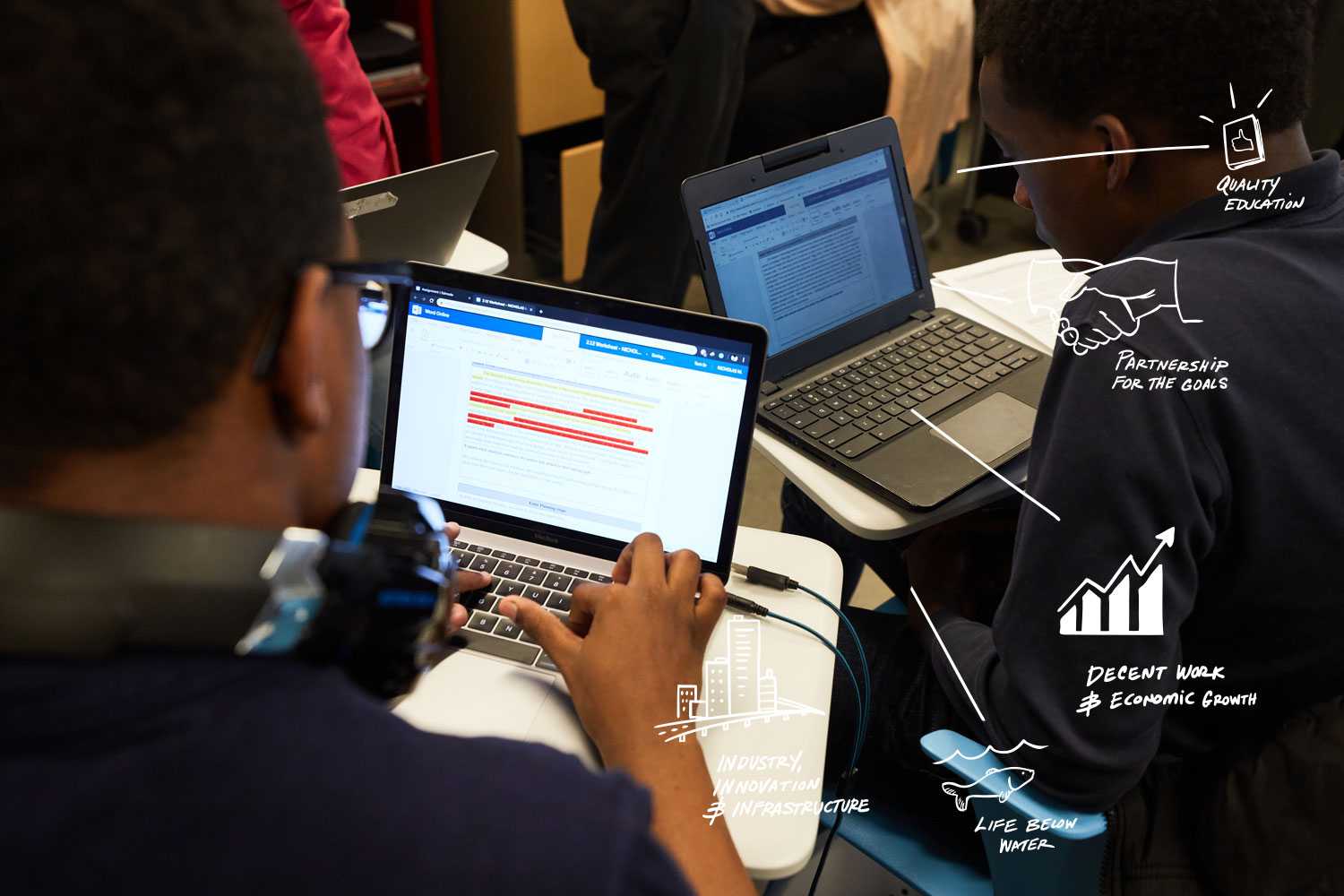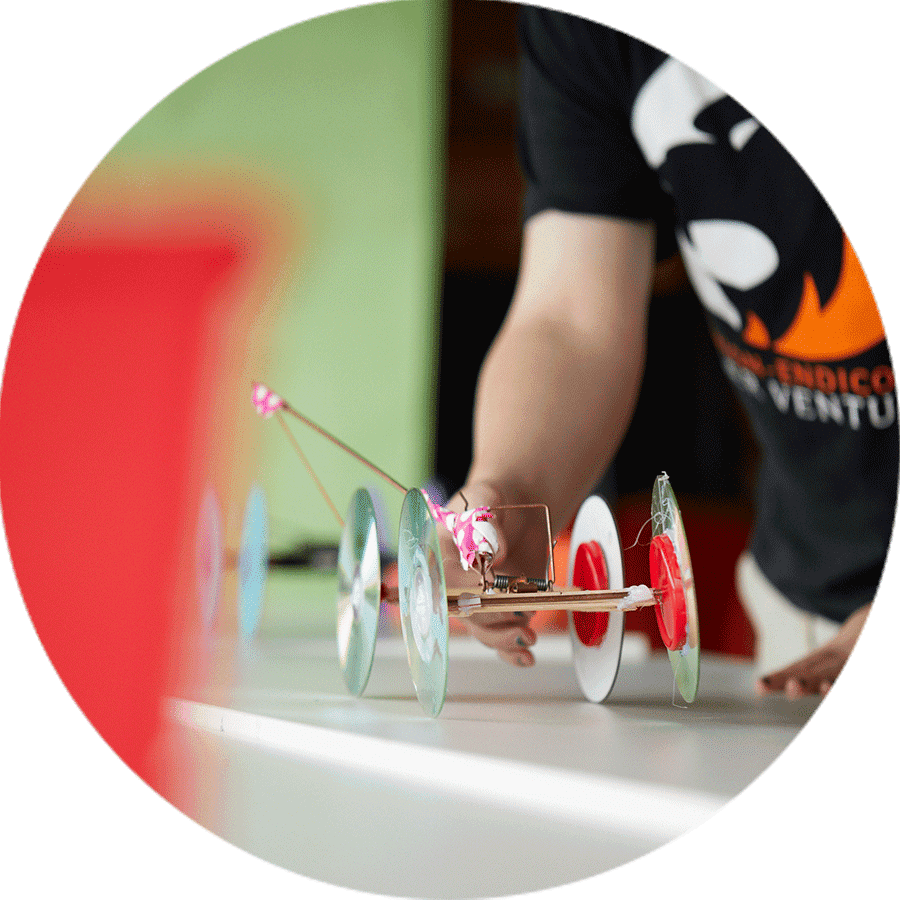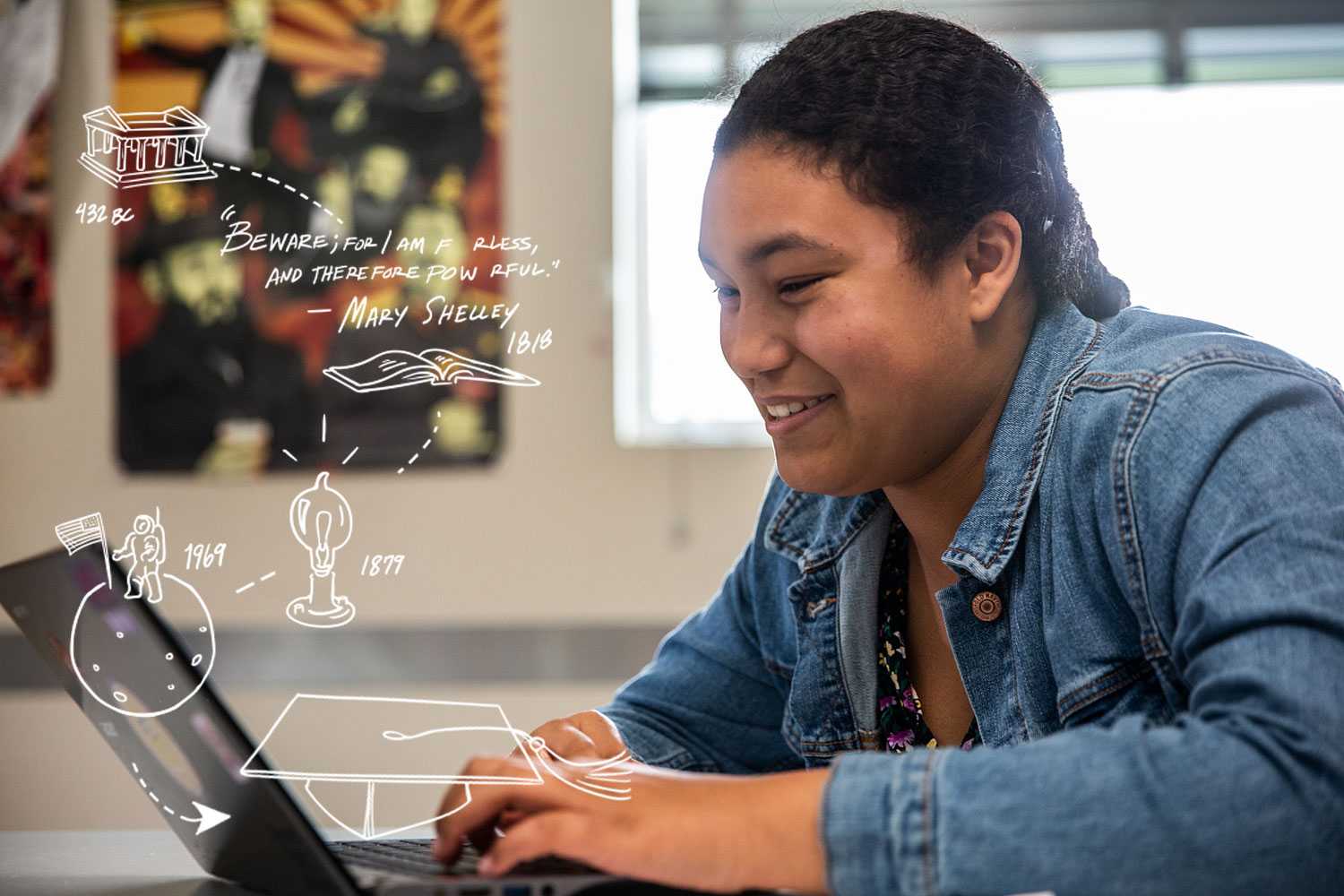2. Performance assessments can be tools to advance equity.

Authentic demonstrations of learning and thoughtful grading practices can help build students’ intrinsic motivation and disrupt patterns of inequity.
Fact:
In Oakland, California, four in five seniors say the district’s Capstone Graduation Project improved their research, writing, and presenting skills and helped them become more proactive learners.
Source: Learning Policy Institute
Innovative approaches to assessment and grading can go far to advance equity. Traditional grading is a product of the industrial era, when high schools were designed to sort students into career tracks and reward good behavior—and, most crucially, when schools were not actually attempting to educate all students to the same high standard. Our goals are very different today.
Author and former educator Joe Feldman has found that effective, equity-oriented grading practices have three purposes. First, such practices guard against implicit bias and untested assumptions. Without grading practices that make equity explicit, teachers may end up disproportionately rewarding students who are better prepared. More seriously, teachers may unconsciously apply lower expectations for low-income students or students of color. Students may be rewarded for compliance, or for efforts that mask rather than confront their own learning deficits. This matters because of a second key function of equity-oriented grading practices: they are designed to give students, teachers, and families accurate information about how well students are doing—how thoroughly they have mastered content and developed essential skills. If bias impinges on grading, grades are by definition not accurate. Finally and most important, equitable grading practices focus students’ attention and satisfaction on their own learning. In other words, they cultivate intrinsic motivation, rather than distracting students with the extrinsic motivation of the grade itself.
Equitable grading has three pillars: accuracy, bias-resistance, and intrinsic motivation.
Joe Feldman, author of Grading for Equity
Performance assessments and other authentic demonstrations of learning are a core strategy for nurturing intrinsic motivation. Performance assessments can take many forms, such as exploring a solution to a real problem, creating and exhibiting a product, conducting an experiment, or engaging in debates and oral defense. These activities are evaluative, but they also offer opportunities to expand student voice, build college and career competencies, and incorporate culturally relevant content and learning experiences.
Some high schools ask students to demonstrate learning through capstone projects at key milestones. In California, Envision Learning Partners high schools complement traditional tests with a performance assessment called Defense of Learning grounded in Envision’s graduate profile. Students assemble a portfolio of their best work, which they publicly defend at key benchmarks in their high school careers. Seniors deliver a College Success Portfolio Defense, which they must pass in order to graduate. For performance assessments like these, clear, common rubrics can help ensure that all students are assessed according to the same rigorous standards, another key tactic for equity.
Dive Deep
![student working on a project]() Grading for Equity
Grading for EquityListen in as Joe Feldman discusses the pillars of equitable grading in this Harvard EdCast podcast.
Listen![hand holding a science beeker]() The Oakland Story
The Oakland StoryLearn how Oakland revamped its Capstone Graduation Project to foster more equitable expectations and opportunities for students.
Read And Watch![students looking at plants]() Passage Presentations
Passage PresentationsEL Education schools use “passage presentations” as one component of a student-engaged assessment system. Watch this video to see what this looks like in action.
Watch![a student holding a drone]() Defense of Learning
Defense of LearningA culminating portfolio defense is a rigorous, creative way for students to present their learning. Envision Learning Partners offers tools that explain how it’s done, including virtually, and why the approach can help drive school transformation.
Read
Analyze
Capstones, portfolio defenses, and passage presentations are opportunities for students to show what they know and make sense of their own learning. These are also tremendously rewarding events for the school community—moments to celebrate students as individuals and affirm the shared values of the school.
Step 1 – Research
Explore the examples from Oakland Unified School District, EL Education, and Envision Learning Partners. How might similar demonstrations of learning fit within the culture of your school, advance your goals for student learning, and open doors to equity and culturally responsive learning?
Step 2 – Reflect
Discuss your thinking with others on your team. Which aspects of the Oakland, EL, and Envision examples are particularly appealing? Now brainstorm what a meaningful demonstration of learning might look like in your school. When, where, and how would it take place?




